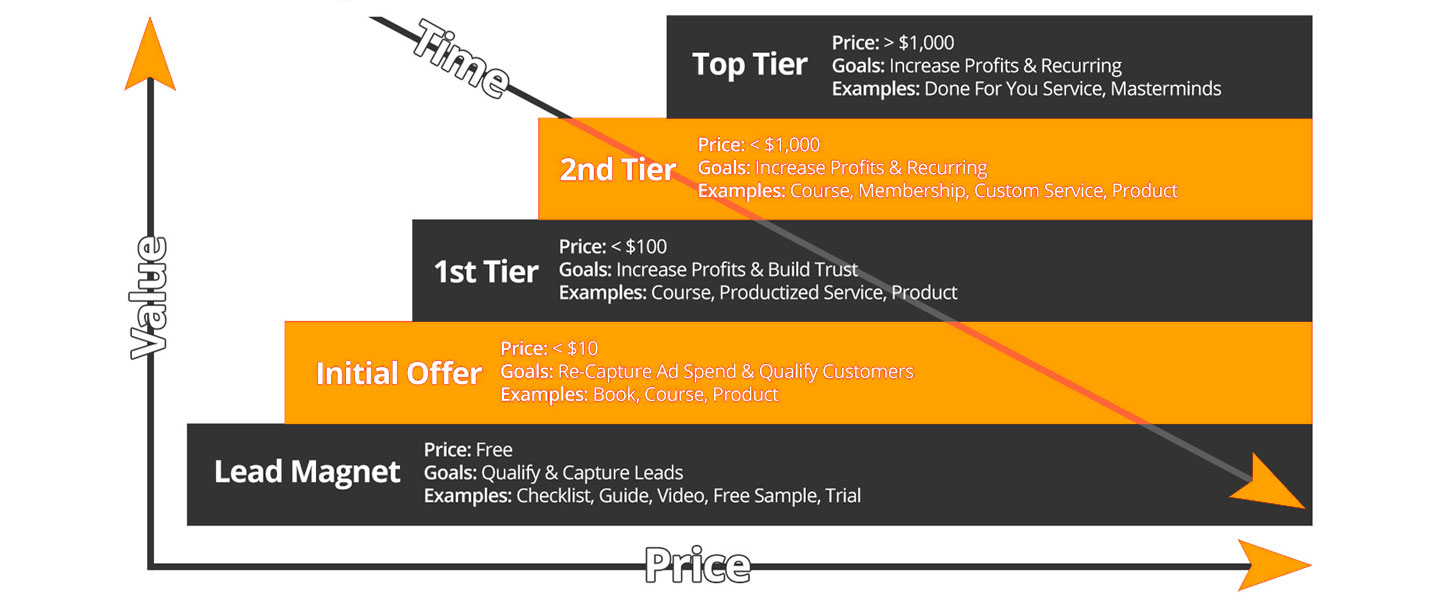We love seeing a successful sales funnel here at Mediatasks - and why not?
A successful sales funnel is an automated fire and forget marketing process that takes people from one place to another more desirable one within your business - and typically generates revenue - well what is not to like about that?
But how do you construct a successful sales funnel? That is not so easy.
Thanks to companies like Clickfunnels, marketing funnels have seriously taken off over the last three years.
There are sales funnels, onboarding funnels, customer service funnels, training funnels and more, but what separates a good funnel from a bad funnel, a successful one, from an unsuccessful one?
One element is the Value Ladder.
What is a Value Ladder?
A Value Ladder is a sequence that takes your ideal customers on a journey to your principal product.
You create a Value Ladder when you are strategically mapping out your sales funnel in the very early stages. Before you get into the funnel software; before you start writing copy, assembling assets, creating the ad campaigns.
Why do I need a Value Ladder?
If you leave it out of your preparation or get it wrong, people will most likely not progress to where you want them to go.
Get it right though, and they most probably will.
Why? This is because the process you go through to do this exercise by creating your Value Ladder will help you appreciate the users' journey. It will help you take a strategic approach and understand why they would move through your sequence, what their considerations would be at each point, and establish what it is you have to do, to help them along the way.
How do I create a Value Ladder?
How you create your Value Ladder is a very simple question to answer. As a template, it essentially looks like a series of steps leading up to your most expensive product.
Below is an example.

Start at the bottom with your entry-level product or service, and work your way up. At every stage, consider it's Price Point, Value, (which should both be increasing) and Goals.
Entry level examples could be a free Lead Magnet only requiring someone's email address in return for a checklist, or a guide, free sample or trial. Second stage examples could be an entry-level course, a book or a low ticket product of yours.
It is crucial to consider the following points here;
- Why would anyone move from each stage to the next?
- Are the products in the sales funnel related?
- Are they following a natural progression?
- Would it be realistic for the customer to purchase the follow-on item from you in that sequence, in the normal course of business?
If not, it probably will not work in a sales funnel and this is one of the errors we see frequently when we take over a funnel that is not performing well.
Identifying a misfiring sales funnel sequence sounds easy then right? Not so.
Here at Mediatasks, we see a lot of funnels in different areas of business so we have a lot of experience diagnosing issues - if your business has one or two funnels in its entirety, then chances are you do not.
Obviously, at this point, we could mention how our funnel experts are on hand to help fix your funnels for you but instead, all I will say is that, even if you only book a free strategy call which takes 20 mins, we should be able to give you enough advice to do the same - if you are that way inclined.
In any case, I hope the next funnel you build will incorporate a Value Ladder as at the very least, it will certainly mean you will get better results than last time around.





[…] as James Thomson explains, utilizing a value ladder enables entrepreneurs to recognize the customer’s position and […]